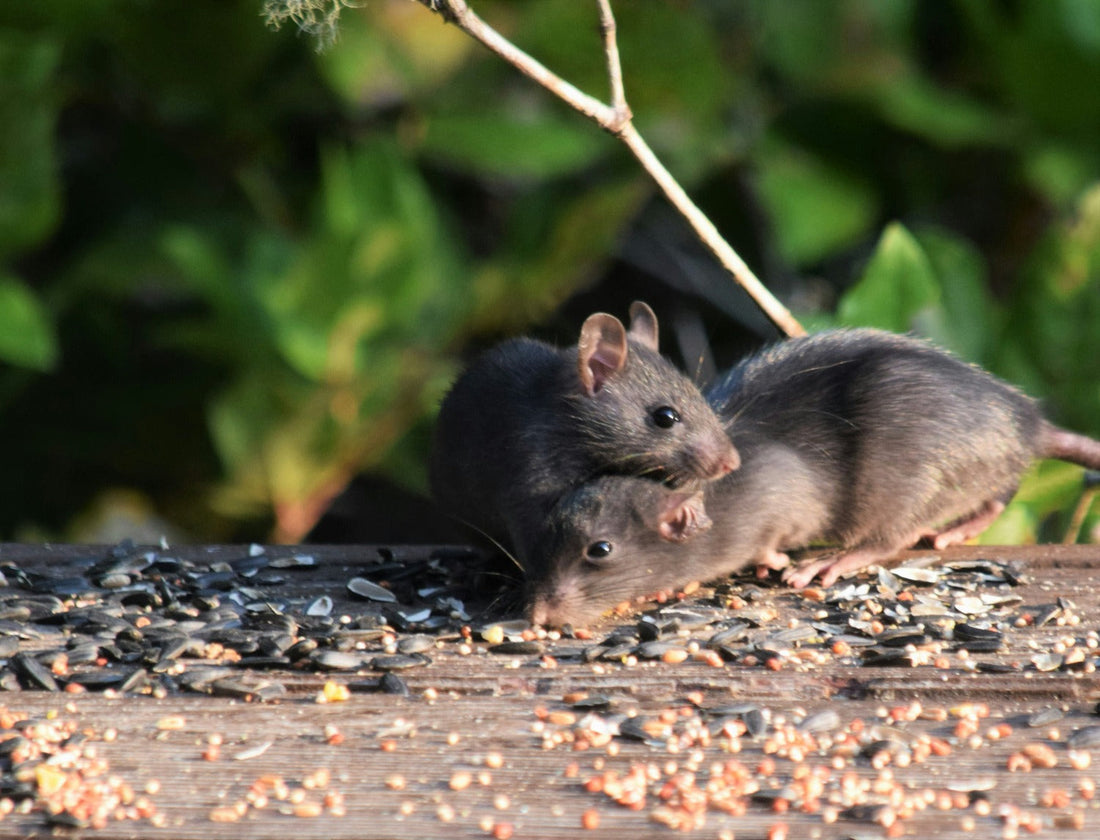
How High Can Mice Jump?
Share
Mice are expert invaders, capable of squeezing through openings as small as a ¼ inch — about the size of a pen cap! — and climbing their way into storage units, vehicles, and more.
And yes, they can jump. But how high?
The truth is that it varies from species to species. That’s why we’re breaking down the abilities of the most common rodent threats and how you can prevent an infestation.
How High Can Mice Jump?
Let’s start with the basics:
House mice (the most common rodent threat) can jump up to 13 inches vertically from a standing position — that’s over a foot straight into the air. And with a running start, they can leap nearly two feet horizontally.
These feats, combined with their ability to climb rough surfaces (like drywall or brick) and squeeze through holes as small as a quarter inch, make them one of the hardest pests to keep out.
House Mouse Abilities
- Vertical Jump: Up to 13 inches
- Horizontal Leap: Nearly 24 inches
- Climbing Skills: Yes — especially on rough or porous surfaces
How High Can Other Rodents Jump?
While the house mouse is the most common intruder, other rodents might find their way onto your property too. Here’s how they compare:
| Rodent | Vertical Jump | Horizontal Leap | Climbing Ability |
|---|---|---|---|
| House Mouse | ~13 inches | ~24 inches | Excellent on rough surfaces |
| Deer Mouse | ~18 inches | ~30 inches | Very good |
| Roof Rat | ~36 inches | ~48 inches | Excellent climber |
| Norway Rat | ~24 inches | ~36 inches | Moderate climber |
| Field Mouse | ~12 inches | ~20 inches | Good |
How to Keep Jumping Rodents Out
Given that mice can leap a full foot into the air and scale rough surfaces with ease, traditional pest control tactics aren’t always enough. Prevention starts with understanding their entry methods — and stopping them before they get inside.
- Block entry points: It doesn’t take much of an opening to allow a mouse into your home. Check for gaps around doors and windows, cracks in your walls or foundations, or exposed vents and fill with caulk or steel wool.
- Eliminate nesting spots: Mice love clutter — it provides shelter and building materials. Keep storage areas organized and discard paper, fabric scraps, and cardboard when possible.
- Remove food sources: Store dry goods, pet food, and even birdseed in airtight containers. Clean up spills right away and avoid leaving food out overnight.
- Try natural deterrents: While not perfect a perfect solution, some scents can repel mice — peppermint oil, Irish Spring soap, and even dryer sheets may deter them when placed strategically near suspected entry points.
- Place strategic mice traps: Traps are a key tool in removing mice that have already found their way into your home. Check out our full guide on where to place them for best results.
- Install a Box-Kat mouse barrier: Our patented mouse barrier prevents mice from getting near your car, walls, storage — or anything else they may be looking to scale over.

How to Know If You Have a Mouse Infestation?
Mice are not subtle guests. More often than not, they will make their presence known. Here are some immediate signs of a possible infestation:
- Droppings & nesting debris: Small, dark pellets near food sources or stored items. Shredded fabric, paper, and insulation may indicate a nest.
- Scratching and scurrying noises: Mice are nocturnal, so listen for activity at night in walls, ceilings, or behind appliances.
- Musty or ammonia-like odors: A strong, musky smell may indicate urine trails or nesting areas.
- Unusual pet behavior: Dogs or cats often detect mice before humans do. If your pet is focused on a specific area, it’s a good idea to investigate.
- Gnaw marks: Mice will chew on most everything, from wires to plastic, wood, and more.
If you notice any of these signs, act quickly — a single female mouse can birth up to 60 offspring in a year, turning a small problem into a major infestation.

Why the Box-Kat Mouse Barrier is Your Best Solution
Even with preventative measures in place, some mice will still find a way in — which is why a physical barrier is your best defense.
The Box-Kat mouse barrier was specifically designed to block mice from ever reaching your home, vehicle, or storage unit.
- 14 inches tall: Taller than a house mouse’s maximum leap, making it impossible to jump over.
- Slick, durable plastic: Mice can’t climb its smooth surface, unlike traditional barriers made of wood or fabric.
- Patented flex panels: Conforms to uneven surfaces, sealing off all potential entry points mice could exploit.
When we tested the Box-Kat by placing 50 mice inside the barrier, not only did the mice not escape — the gave up attempting altogether.
It is a perfect preventative solution for your vehicle, home, garage, or storage area. Shop for your ideal Box-Kat kit here!
Frequently Asked Questions
Can mice jump on beds?
Yes — mice can jump over a foot into the air, so a standard-height bed is easily within reach, especially if nearby furniture or clutter helps them climb.
Can mice jump over traps?
While possible, it’s very unlikely that they’ll try. However, mice are cautious and can avoid traps if not placed properly along walls or entry routes.
Can rats jump higher than mice?
Some can. For instance, roof rats can jump up to 3 feet high and 4 feet across — much farther than house mice.
Do mice climb walls or only jump?
Both. Mice are excellent climbers and can scale rough surfaces like wood, drywall, and brick — meaning their agility isn’t limited to jumping alone.



